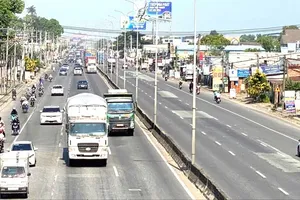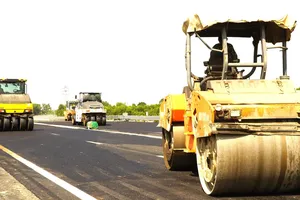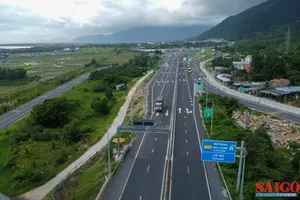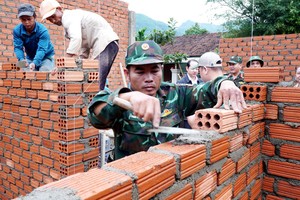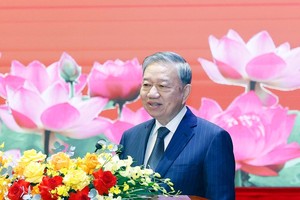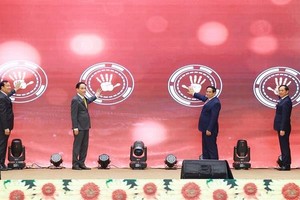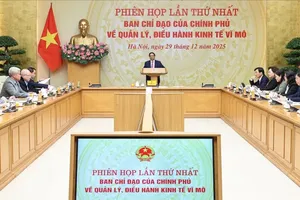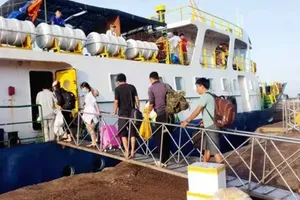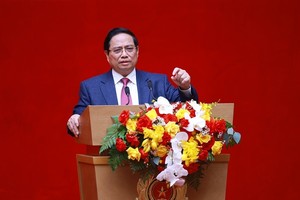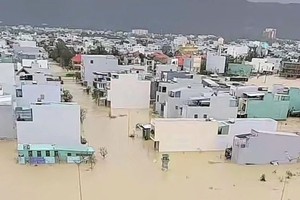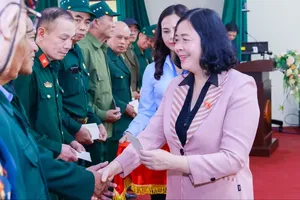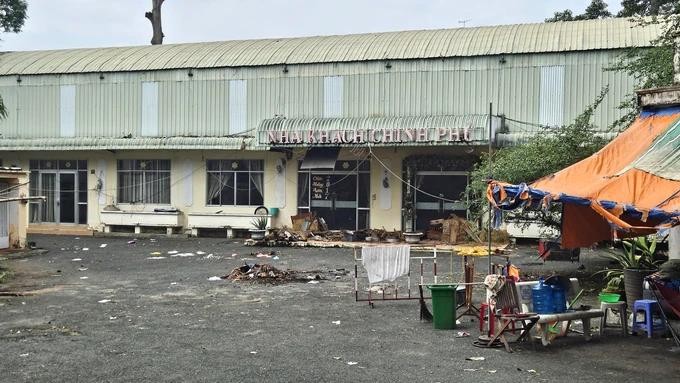
Throughout the nation, a significant number of public assets remain neglected, with numerous construction initiatives left unfinished and deteriorating over time. Additionally, several multi-billion Vietnamese dong investment projects are underutilized. Consequently, a part of public resources which are already scarce in relation to actual demand—has not been effectively employed, causing widespread frustration in society.
One example of this waste is the underutilization of land in bustling commercial districts. The plot of land No.1 in Ly Thai To Street in Ho Chi Minh City’s District 10, along with Hung Vuong and Tran Binh Trong streets, forms a golden triangle. This area, covering approximately 3.7 hectares, contains seven old villas, greenery space; all of which are public properties managed by the Ministry of Foreign Affairs but have been left abandoned for many years.
In contrast to the bustling atmosphere on the major surrounding roads, this prime piece of land and the structures within it are enveloped in silence and are severely deteriorated. Deep inside, the uninhabited villas are increasingly falling apart, piles of garbage are accumulating, and the grounds are overgrown with wild vegetation.
A security guard said that inside the villas, there are still assets that have not been moved, but because they have not been used or maintained for a long time, most of them are damaged.
Resident Nguyen Van Dung in Ho Chi Minh City's District 3 expresses deep regret over the neglect of this golden land lot which could have significantly contributed to the city's revenue. The prolonged abandonment has led to substantial wastage and has marred the urban landscape. Residents and voters of District 10 have consistently raised concerns with the authorities about this issue, urging for effective solutions to utilize the land, including the construction of a commercial center, cultural establishments, or its auctioning.
A spokesperson from the Ho Chi Minh City Department of Finance has indicated that the aforementioned land is anticipated to be transferred from the Ministry of Foreign Affairs to Ho Chi Minh City for the purposes of management and development into a complex. The city has taken the initiative to assign specific responsibilities to the related agencies, and once the land is received, it will commence the subsequent actions. However, the timeline for the transfer of the land for the city's utilization remains uncertain.
The neglected public works and assets are prevalent in numerous regions throughout the country. In Hanoi, there are several housing projects that have reached near completion yet remained unoccupied for an extended period. One notable example is the Tran Phu resettlement area located in Hanoi’s Hoang Mai District, which features two apartment buildings, one with nine stories and another with fifteen stories, constructed in 2018 to facilitate the clearance of the Youth Park. After years of abandonment, the resettlement housing area has begun to show signs of deterioration.
Similarly, the construction of the N01-D17 resettlement housing project in Cau Giay District started in 2010 and was completed in 2013, but has not yet been put into use. Another project that has sparked publicconcerns is the five abandoned apartment buildings of the Hanoi Old Quarter resettlement project in Thuong Thanh Ward of Long Bien District. These buildings have stood vacant for over a decade.
Public investment is important to the country, a lever for key sectors and regions to develop, stimulating private investment, thereby implementing social welfare policies, improving people's quality of life. However, waste in public investment in our country is quite common in many sectors.
In Phu Ly City, Ha Nam Province, the high-rise buildings of two hospitals are cracked and moldy like abandoned houses, covered with moss and weeds.
It's astonishing that these are the second facilities of Viet Duc Hospital and Bach Mai Hospital, with respective investments of VND4,968 billion and VND4,990 billion. Both projects, with a capacity of 1,000 beds each, were initiated by the Ministry of Health in 2014. Yet, only the examination area of Bach Mai Hospital was operational from March 2019 to March 2020 before closing. Meanwhile, the second facility of Viet Duc Hospital remains unopened to this day.
The sports sector is also plagued by the misuse of public funds. The Ha Nam Provincial Sports Stadium, boasting over 7,000 seats and state-of-the-art equipment, was completed in late 2014 at a cost of over VND1 billion. Despite hosting several sporting events and undergoing renovations for the 2022 SEA Games, the stadium remains largely unused and is on the brink of closure.
Tien Son Sports Palace was built in a bustling street in Hai Chau District of the Central City of Da Nang, encompassing a total area exceeding 9.4 hectares, of which only 1.04 hectares is designated for the stadium. The construction of this facility commenced in 2009, with an investment of VND740 billion (US$42 million at the time) and it became operational in December 2010. Subsequently, an additional investment of VND80 billion was allocated for renovations and upgrades to accommodate events for APEC Vietnam 2017.
Nevertheless, to date, the number of cultural and sports events hosted at this venue remains limited, resulting in insufficient revenue to meet operational expenses.
A glaring example of wasted investment is the 131-kilometer Yen Vien - Pha Lai - Ha Long - Cai Lan railway project, costing a staggering VND7,665 billion. This project is crucial for the development of the Kunming (China)- Lao Cai - Hanoi - Hai Phong - Quang Ninh economic corridor. Construction began in 2005, but nearly two decades later, it remains unfinished.
According to Director Vu Hong Phuong of the Railway Project Management Board under the Ministry of Transport, the project has disbursed more than VND4,340 billion (nearly 57 percent), but the items are still under construction.
Despite purchasing rail and sleeper packages worth VND771 billion, only a portion (approximately VND105 billion) has been installed. The remaining materials are languishing in costs for supervision, preservation, and maintenance.
During his tenure as Chairman of Quang Ninh Province, Mr. Nguyen Van Thang who is now Minister of Transport repeatedly advocated for the project's resumption to prevent further waste. However, the project's substantial cost and shifting local socioeconomic priorities have made private investment unfeasible.



